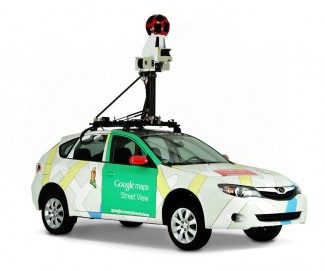Google naturally rolled out their initial virtual reality experiments on Android, but now that the company has gotten serious about Cardboard, we’re seeing more of the VR initiative make its way to Apple’s iOS. And now, Street View VR functionality has finally arrived on the iPhone.
Although not created with VR in mind, it turns out that Google’s spherical Street View photos work well in virtual reality and thus constitute a massive repository of immersive views that cover a large portion of the globe.
Google brought VR support for Street View to Google Maps on Android way back in June 2014 when they first launched Cardboard. Following an initial Cardboard launch on iOS back in May, Google has now updated their standalone iOS Street View app with Cardboard support.
See Also: Google Bringing VR to iPhone, Cardboard App Now Available on iOS with New Demos

Inside the updated app you’ll now find the Cardboard icon on every Street View. Tap it and you’ll be launched into that familiar split view. The gear icon in the middle allows you to scan the code on any compatible Cardboard viewer to configure the views specifically for your headset.
Views are monoscopic for now, with no word on whether or not Google is considering adding support for stereoscopic scenes. Given that the bulk of Street View images are captured by the company’s specially outfitted cars, stereoscopic supports seems unlikely until the capture hardware itself is updated to capture 3D imagery.
But car-captured street scenes aren’t the only views to be found in VR on Street View. The app allows anyone to capture and share Photo Spheres, which means you’ll find plenty of cool views off the beaten path.
I for one am hoping the company adds timeline support to the app, enabling users to move temporally through views to see how they have changed over time. If Google survives for the next 100 years, we’re going to have some pretty amazing immersive views of real places transforming over time.









